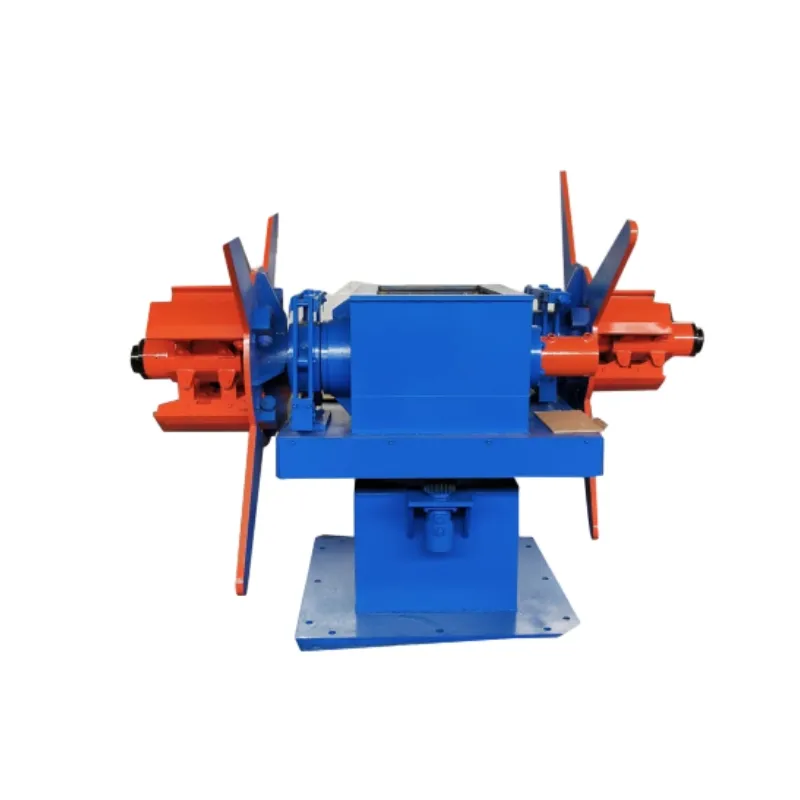Innovations and Techniques in Cold Roll Forming Processes and Applications
Understanding Cold Roll Forming A Comprehensive Guide
Cold roll forming is a specialized manufacturing process that has become increasingly important in the production of metal components. This technique involves the gradual shaping of metal sheets or strips into specific profiles through a series of consecutive rolls. Unlike traditional forming processes that may involve heating materials, cold roll forming is performed at room temperature, which offers several advantages in terms of product quality and efficiency.
The Process of Cold Roll Forming
The cold roll forming process begins with a flat metal strip, which is fed into a series of rollers that incrementally shape the material. Each roller is designed to alter the geometry of the strip slightly, moving it closer to the final desired cross-sectional profile. The process may include multiple stages and various roller designs, enabling manufacturers to create complex shapes with precision.
Key components in the cold roll forming process include
1. Material Selection Common materials used in cold roll forming include steel, aluminum, and other alloys. The choice of material can significantly affect the final product's strength, weight, and resistance to corrosion. 2. Roll Design The configuration of the rollers is critical. Each roller must be designed to apply the appropriate amount of pressure and to create the desired shape without causing defects like buckling or cracking.
3. Lubrication Using a lubricating agent can reduce friction between the metal strip and the rollers, enhancing the efficiency of the process and extending the life of the tooling.
4. Post-Forming Operations After forming, components may undergo additional processes such as trimming, punching, or welding to meet specific design requirements.
Advantages of Cold Roll Forming
Cold roll forming presents several advantages over other manufacturing methods
1. High Precision The process allows for the production of highly accurate profiles, minimizing the need for additional machining operations. This precision contributes to better fit and finish in the final product.
2. Enhanced Strength By inducing work hardening during the forming process, cold roll formed parts often exhibit improved mechanical properties compared to those produced by other methods, such as hot forming.
cold roll forming

3. Material Efficiency Cold roll forming typically generates less waste compared to processes like cutting or bending. Since the shape is created from a continuous strip, there is minimal scrap material.
5. Versatility Cold roll forming can be used to create a wide variety of shapes, including channels, beams, and custom profiles, making it suitable for various industries ranging from construction to automotive manufacturing.
Applications of Cold Roll Forming
The versatility of cold roll forming allows it to be employed across multiple sectors
- Construction Steel studs, tracks, and frames are commonly produced using cold roll forming, providing economical and reliable structural components.
- Automotive The automotive industry utilizes cold roll formed parts for components like chassis frames, brackets, and reinforcements that require strength without excessive weight.
- Electrical enclosures and channels for wiring are also frequently produced using cold roll forming, showcasing the process's adaptability.
- Furniture Metal frames and supports in furniture production often use cold roll formed parts to enhance durability and aesthetic appeal.
Conclusion
Cold roll forming stands out as a clever and efficient manufacturing process that meets the demands of modern production. Its ability to create complex shapes with high precision and strength makes it a favored method across diverse industries. As technology evolves, advancements in cold roll forming techniques and equipment continue to enhance its applications, solidifying its role as an essential manufacturing method in the metalworking industry. Whether for structural applications in construction or components in the automotive sector, cold roll forming maintains a significant footprint in the landscape of modern manufacturing.
-
High Frequency Straight Seam Welded Pipe Production Line|BzZhou Xinghua|Precision Welding&EfficiencyNewsJul.30,2025
-
High Frequency Straight Seam Welded Pipe Production Line - BzZhou Xinghua|Precision Engineering&EfficiencyNewsJul.30,2025
-
High-Frequency Straight Seam Welded Pipe Production Line-BzZhou Xinghua Machinery Equipment Manufacturing Co., LTD.NewsJul.30,2025
-
High-Frequency Straight Seam Welded Pipe Production Line-BzZhou Xinghua Machinery Equipment Manufacturing Co., LTD.|Precision Manufacturing, High EfficiencyNewsJul.30,2025
-
High Frequency Straight Seam Welded Pipe Production Line-BzZhou Xinghua Machinery Equipment Manufacturing Co., LTD.|Precision Steel Pipe Manufacturing&Industrial EfficiencyNewsJul.29,2025
-
High-Frequency Straight Seam Welded Pipe Production Line-BzZhou Xinghua Machinery Equipment Manufacturing Co., LTD.|Precision Steel Pipe Manufacturing&Industrial EfficiencyNewsJul.29,2025


